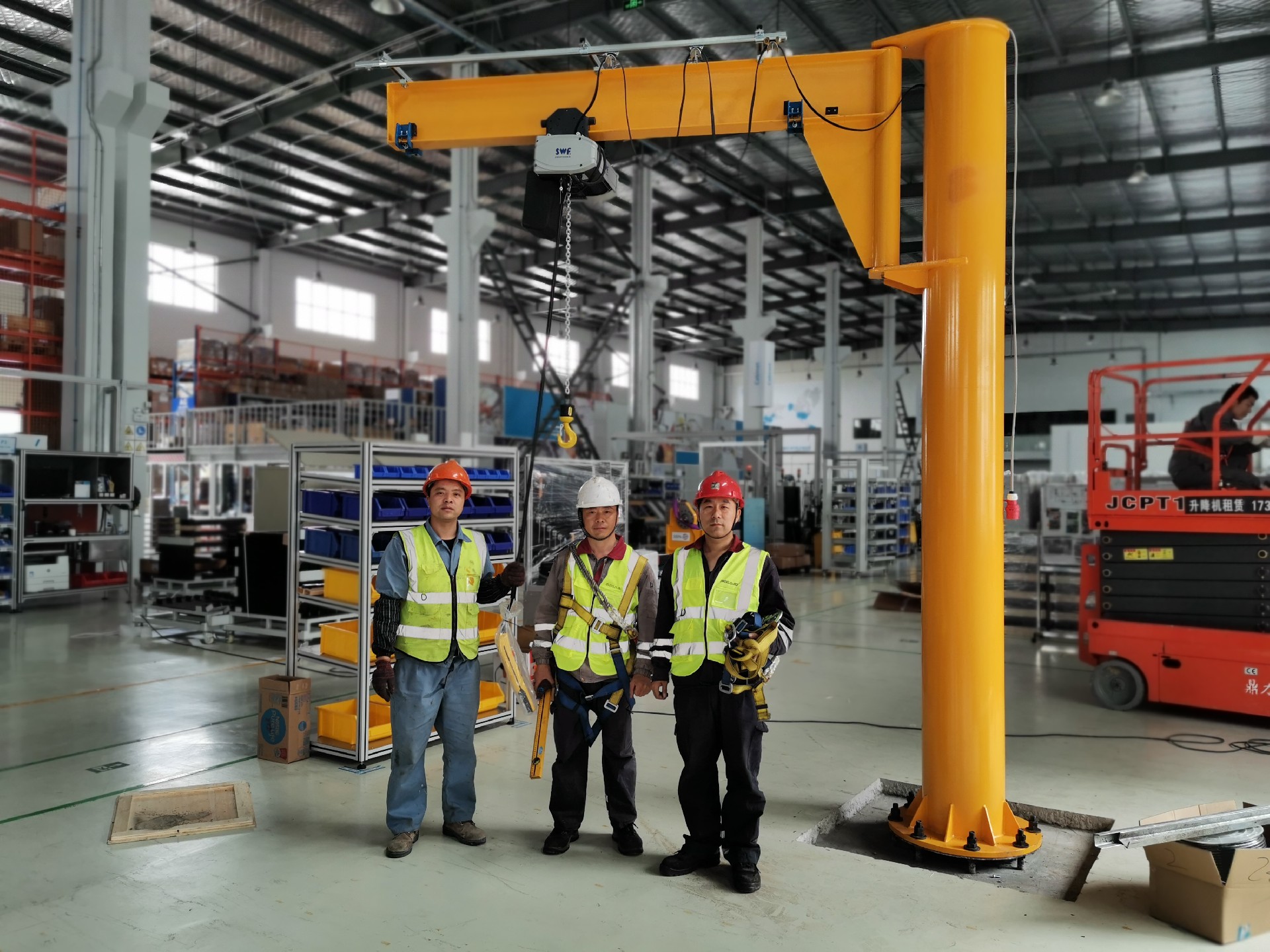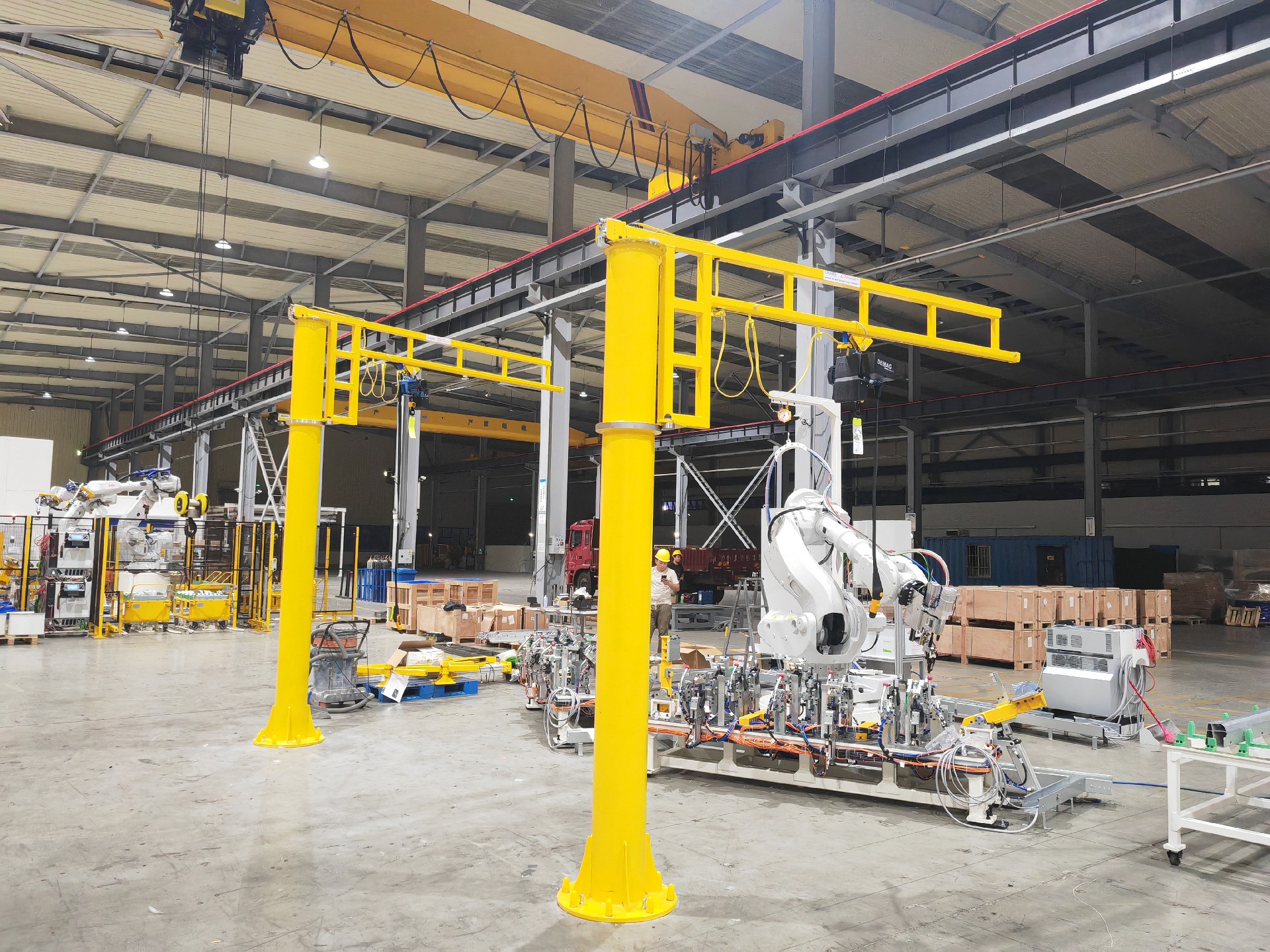In modern industrial production, jib cranes play a vital role, of which intelligent jib cranes and ordinary jib cranes are the two most common types.
1. Basic introduction
1. Ordinary jib crane
Ordinary jib crane is a common lifting equipment, and its structure usually includes columns, cantilevers and electric hoists. It uses an electric hoist to realize
the lifting and lowering operations of goods, and is widely used in material handling work in factories, warehouses and other places.
2. Intelligent cantilever crane
The intelligent cantilever crane is an intelligent upgrade based on the traditional cantilever crane. Its core component is the intelligent hoist, which combines
advanced technology to significantly improve the performance of the jib crane.

2. Respective characteristics
1. Characteristics of ordinary cantilever cranes
(1) The structure is relatively simple, the cost is low, and it is easy to maintain and repair.
(2) The operation method is relatively traditional and is controlled through the buttons of the electric hoist.
2. Features of intelligent cantilever crane
(1) It has an intelligent operating mode, making the operation easier and more efficient.
(2) Adopting advanced drive system and control technology, the operation is more stable and precise.
3. Specification introduction
Both ordinary cantilever cranes and intelligent cantilever cranes have a variety of specifications to choose from to meet different working scenarios and needs.
Its specifications usually include lifting capacity, cantilever length, rotation angle, lifting height, etc. When selecting, users need to determine appropriate
specifications based on actual working conditions.

For example, when handling irregularly shaped goods, the suspension mode of the smart cantilever crane allows the operator to adjust the position of the
goods more freely, while a conventional cantilever crane may require multiple button operations to achieve the desired effect.
2. Work efficiency
The intelligent cantilever crane adopts a servo drive system and has a faster lifting speed. This means that in the same period of time, the intelligent cantilever
crane can complete more lifting tasks, greatly improving work efficiency.
3. Positioning accuracy
The suspension mode (force balance mode) of the intelligent cantilever crane can accurately position the load, which is of great significance for some work
scenarios that require high lifting accuracy, such as the handling of precision parts. In comparison, ordinary cantilever cranes are slightly inferior in terms of
accuracy.



 0086 17717607077
0086 17717607077
 0086 (021) 5999 9072
0086 (021) 5999 9072
 market@chnhoist.com
market@chnhoist.com







